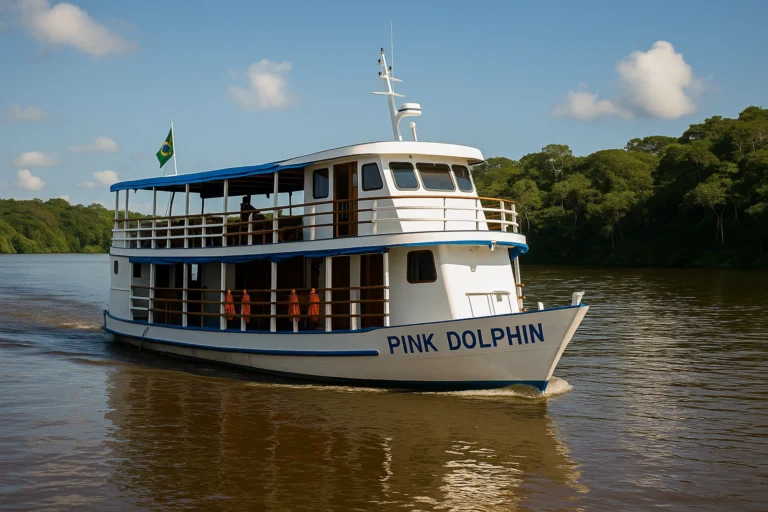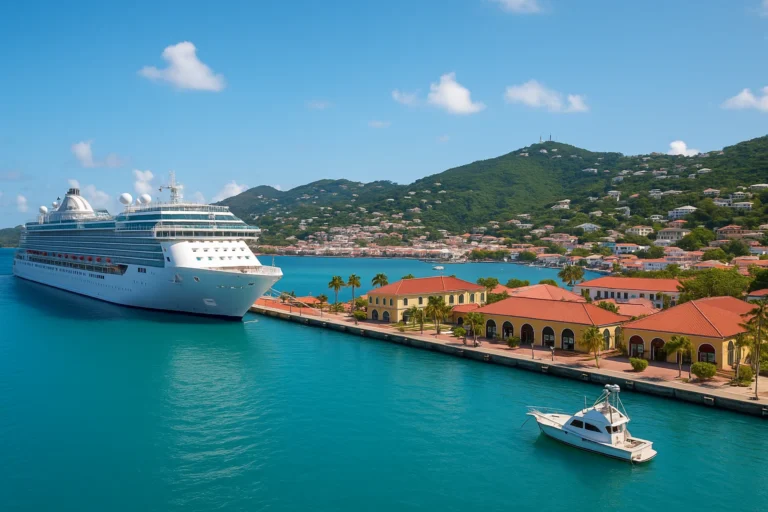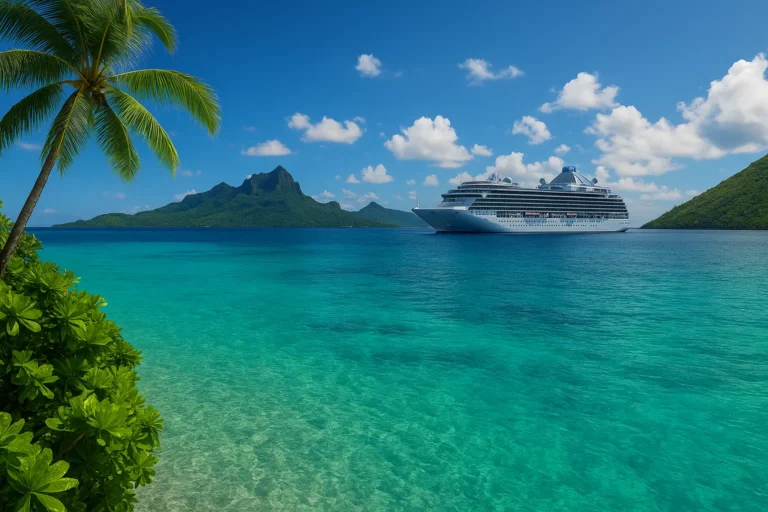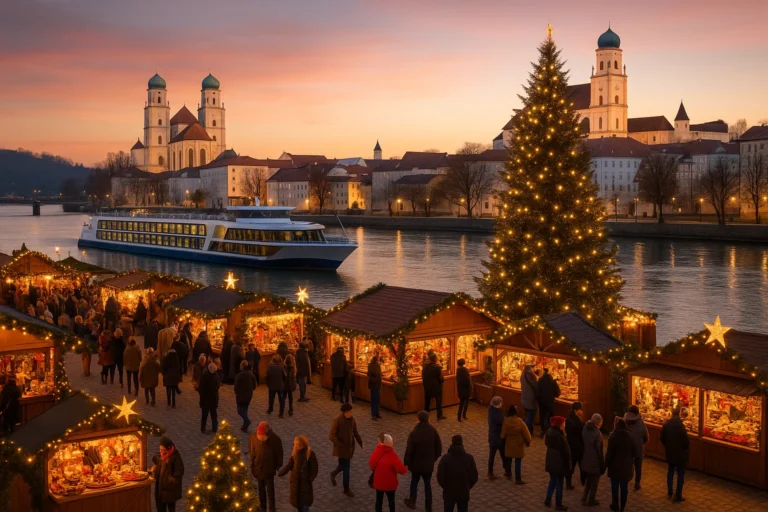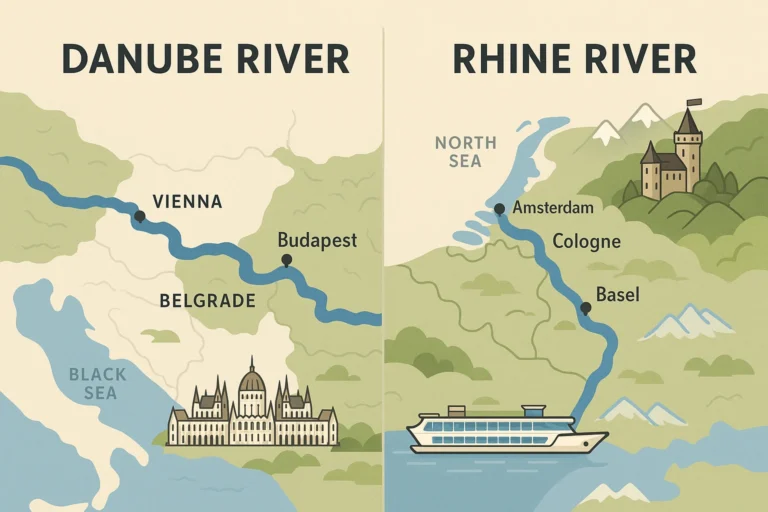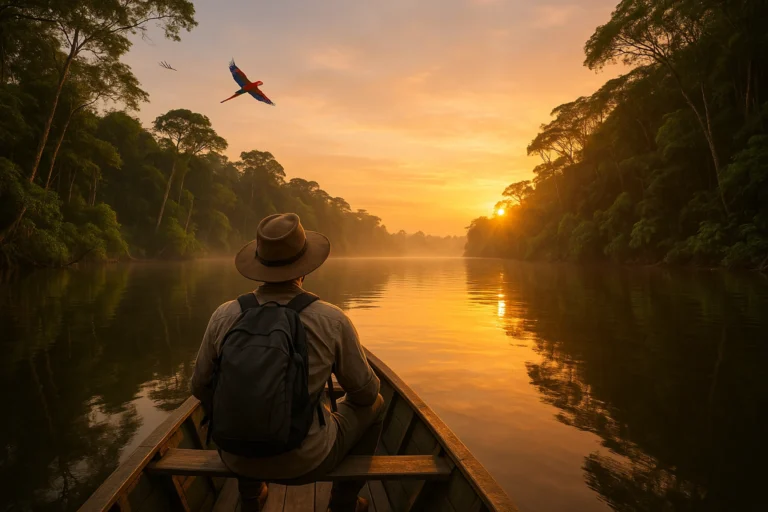The Best Time for a Maldives Cruise: Weather, Wildlife, and Avoiding Monsoon Season
Planning your perfect escape?
The Best Time for a Maldives Cruise: Weather, Wildlife, and Avoiding Monsoon Season
A definitive guide to your ideal Maldivian journey.
Choosing the right time to embark on a Maldives cruise is arguably the most critical decision you’ll make when planning your trip. While the islands are a tropical paradise year-round, the experience can vary dramatically depending on the season. The Maldives is a delicate ecosystem governed by the rhythms of the monsoons, which influence everything from the clarity of the water and the abundance of marine life to the cost of your trip and the tranquility of your journey. This comprehensive guide will take a deep dive into the nuances of Maldivian seasonality, empowering you to select the perfect time to visit based on your unique travel style, budget, and the kind of adventure you’re dreaming of.
The Maldivian Climate: A Tale of Two Monsoons
The Maldives has a tropical monsoon climate, which is defined by two distinct seasons rather than four. These are the dry northeast monsoon, known locally as **Iruvai**, and the wet southwest monsoon, called **Hulhangu**. The transition periods between these two monsoons are often considered the best times to visit, as they offer a balanced mix of good weather and fewer crowds. Understanding the characteristics of each monsoon is the first step to planning your perfect cruise.
The Dry Season (Iruvai): November to April
This is the classic, postcard-perfect time to visit the Maldives. The Iruvai monsoon brings warm, dry weather, low humidity, and a steady, gentle breeze. Sunshine is abundant, with an average of 8-9 hours per day. The seas are exceptionally calm, and the water visibility is at its absolute peak, making it the ideal period for snorkeling, diving, and underwater photography. The skies are consistently blue and cloudless, creating those iconic, breathtaking panoramas that the Maldives is famous for. This is the **high season** for tourism, with prices for flights, cruises, and resorts reaching their peak, especially around Christmas, New Year’s, and Easter. Travelers seeking guaranteed sunshine, calm waters, and perfect conditions for relaxation will find their paradise during this time. The downside is that you will be sharing the lagoons with many other visitors, and popular dive sites can feel a bit crowded.
The Wet Season (Hulhangu): May to October
The Hulhangu monsoon is often misunderstood and unfairly dismissed by travelers. While it does bring an increased chance of rain, it’s not the constant downpour many imagine. Showers are typically short, heavy, and localized, often lasting only an hour or two before the sun returns. The weather can be less predictable, with a higher chance of storms and strong winds, particularly between June and August. However, this season offers two significant advantages that can turn a good trip into an unforgettable one: lower prices and incredible marine life encounters. The monsoon winds and currents stir up the ocean, bringing nutrient-rich waters to certain atolls. This phenomenon causes a massive plankton bloom, which in turn attracts immense congregations of manta rays and whale sharks, offering truly once-in-a-lifetime experiences. For the budget-conscious traveler, the cost savings on flights and liveaboards can be substantial, making this a much more accessible time to visit. While the water clarity may not be as high as in the dry season, the sheer volume of marine life more than makes up for it for many adventurers.
Month-by-Month Breakdown: Your Perfect Travel Window
The Peak Months (December – March)
This is the most popular time to visit. The weather is stable, dry, and sunny. It’s perfect for all kinds of water activities, from diving and snorkeling to paddleboarding and kayaking. Expect high prices and booking well in advance is essential. **December** is a transitional month; the first half offers great value before the Christmas holiday surge, while the second half is the most expensive time to visit. **January and February** are the driest months, offering minimal rain and maximum sunshine. **March** sees an increase in humidity but remains a great time to visit before the peak of the tourist season ends.
The Shoulder Months (April & November)
These months are often the “sweet spot” for many travelers. **April** is the end of the dry season, offering excellent weather, improving visibility, and slightly fewer crowds than the peak months. **November** is the beginning of the dry season, where the rain starts to subside. The weather improves steadily, and you can still find great deals before the high-season prices kick in. Both months offer a fantastic balance of good weather, reasonable prices, and a more relaxed atmosphere.
The Low Season (May – October)
This is the best period for those who prioritize budget and unique wildlife experiences. **May and June** mark the start of the wet season; rainfall increases, but so do the chances of spotting large marine life. **July and August** are the wettest and windiest months, but they are also the absolute prime time for seeing manta rays and whale sharks, especially in famous spots like Hanifaru Bay. **September and October** are the end of the monsoon; rainfall decreases, and prices remain low, offering a fantastic opportunity for a great deal on a liveaboard or resort. Don’t be deterred by the “rainy season” label; you can still expect plenty of sunshine and amazing moments.
Choosing the Right Time Based on Your Goals
For the Sun Seeker and Photographer
If your primary goal is to relax under a cloudless sky, get a perfect tan, and take stunning photos, the **dry season (November to April)** is your best bet. The consistent sunshine, calm seas, and perfect water clarity are unrivaled. Liveaboard cruises during this period can take you to the most remote atolls, where the water is at its most transparent and marine life is easy to spot from the surface. You can spend your days snorkeling in gin-clear lagoons and your evenings watching star-filled skies from the deck of your yacht.
For the Diver and Snorkeler
For those passionate about marine life, the **wet season (May to October)** is a dream come true. The shift in monsoon currents brings vast quantities of plankton and nutrients to the shallow lagoons and bays. This triggers a mass migration of majestic manta rays and the gentle giants of the ocean, the whale sharks. While visibility may not be as pristine as in the dry season, the sheer number of large marine animals is breathtaking. Hanifaru Bay in the Baa Atoll, a UNESCO Biosphere Reserve, becomes a protected feeding ground where divers and snorkelers can witness hundreds of manta rays in a single session. This is an unparalleled experience that is well worth the risk of a few rainy hours.
📂 Explore More in These Categories
Best Cruise Destinations in 2025: Caribbean, Europe & Bucket List Ports
Maldives Cruises 2025 – Luxury Routes, Honeymoon Trips and Best Deals
For the Budget Traveler
If you’re traveling on a budget, the **wet season (May to October)** is your best friend. Prices for flights, resorts, and liveaboards can be up to 50% lower than during the high season. Many operators offer generous discounts and special packages to attract travelers during this time. You can still experience the best of the Maldives—stunning beaches, vibrant reefs, and incredible marine life—without the luxury price tag. While you might encounter some rain, the savings and unique experiences make it a worthwhile trade-off. Booking in the shoulder months of May, June, September, and October can give you the best of both worlds: lower prices and improving weather.
People Also Ask
Common Questions for Your Trip
Which month is best for snorkeling in Maldives?
The absolute best months for snorkeling in the Maldives are **January, February, and March**. These months fall squarely within the dry season, when the northeast monsoon is at its peak. The weather is consistently sunny and dry, leading to exceptionally calm seas and unparalleled water clarity. Visibility often exceeds 30 meters, allowing you to see vibrant coral reefs and schools of tropical fish as if you were in a giant swimming pool. The lack of strong currents makes it a very safe and pleasant experience for all skill levels, and underwater photographers will find these conditions perfect for capturing stunning shots of the marine life.
What month has the best weather in the Maldives?
Without a doubt, the months of **January and February** offer the best weather in the Maldives. They are the driest months of the year, with the highest number of sunshine hours and the lowest humidity. The skies are almost always clear, and the temperatures are consistently warm and comfortable, averaging around 28-30°C. This perfect weather comes from the strong and stable northeast winds of the Iruvai monsoon. While it’s the most reliable time for good weather, it’s also the most expensive and crowded period, as travelers from all over the world flock to the islands to escape the winter in their home countries.
What is the best month to see whale sharks in the Maldives?
The best time to see whale sharks is during the **wet season (May to October)**, but particularly from **July to October**. During these months, the southwest monsoon brings an abundance of plankton to the eastern side of the atolls. Hanifaru Bay, located in the Baa Atoll, is internationally famous as a mass feeding ground where hundreds of whale sharks and manta rays can congregate at once. While whale sharks can be spotted year-round in the South Ari Atoll, their numbers peak in the summer months, offering a much higher chance of a guaranteed sighting. This is the prime time for diving and snorkeling with these gentle giants.
Which month is monsoon in Maldives?
The **wet monsoon season**, known locally as **Hulhangu**, runs from **May to October**. This period is characterized by increased rainfall, higher humidity, and stronger winds. While the rain can be heavy, it typically comes in short, powerful bursts followed by periods of sunshine. The opposite, or dry monsoon, is the **Iruvai**, which runs from **November to April**. Both monsoons bring a distinct set of advantages and disadvantages for travelers, so it’s important to choose based on your priorities rather than simply avoiding the “monsoon” season.
Maldives in November
November is an excellent transition month for a Maldives cruise. It marks the shift from the wet season to the dry season. The rains of the Hulhangu monsoon have largely subsided, and the weather becomes consistently sunny and warm. It offers a fantastic balance between good weather and more reasonable prices compared to the December peak season. The sea conditions improve significantly, making it ideal for sailing. This month is particularly attractive for travelers who want to experience the high season’s perfect weather without paying the peak-season prices or dealing with the holiday crowds.
Best time to visit Maldives
The “best time” is highly subjective. For those seeking **perfect weather, clear skies, and calm seas**, the dry season from **November to April** is the clear winner, despite the higher costs. For those interested in **budget travel and seeing incredible marine life**, the wet season from **May to October** offers unbeatable value and phenomenal wildlife encounters, especially with manta rays and whale sharks. The shoulder months of April and November offer a great compromise, providing a balance of good weather, fewer crowds, and more affordable pricing.
Best time to see manta rays in Maldives
Manta rays are present in the Maldives year-round, but their movements are dictated by the monsoon seasons. The best time to see them in large numbers is during the **wet season, from May to November**. The southwest monsoon currents push plankton-rich water to the western side of the atolls, attracting huge feeding aggregations. The most famous location for this is **Hanifaru Bay in the Baa Atoll**, where hundreds of mantas can be seen feeding at the surface, especially from **July to October**. On the other hand, during the dry season, the mantas move to the eastern side of the atolls, where they gather at “cleaning stations” in deep water, making them a more difficult sight to find.
Maldives in September
September is an excellent shoulder month to visit the Maldives. It falls at the end of the wet season, so while there is still a chance of rain, the frequency and intensity of the showers begin to decrease. The winds also start to calm down, and sea conditions improve. For travelers, this means you can enjoy the lower prices of the off-season while getting better weather. It’s still a prime time for spotting manta rays and whale sharks, especially in the central and northern atolls, where the plankton blooms persist. A September cruise is a great choice for those who are flexible and want to find a fantastic deal without compromising too much on the experience.
Maldives holidays
Maldives holidays are most popular during the dry season, particularly around Christmas, New Year, and Easter. This is the most expensive and busiest time to travel, with resorts and liveaboards often booked solid months in advance. The atmosphere is festive, with special events, galas, and celebrations. However, a holiday trip during this time requires a large budget and extensive planning. Alternatively, you can take advantage of off-season holidays in May, June, or September, where you can find incredible deals and experience the true local life of the islands.
Holiday weather maldives
For most people, “holiday weather” in the Maldives means dry, sunny, and calm conditions, which are characteristic of the dry season from November to April. During this period, the average daily temperatures are consistently between 28-30°C, and the humidity is low. You can expect long hours of sunshine and minimal clouds. The seas are calm and perfect for all water activities. This ideal weather is why the holiday season from December to February is the most sought-after and expensive time to visit.
Maldives in December
December in the Maldives is a month of transformation. The first half is a fantastic time to travel, with improving weather, lower prices, and fewer crowds than later in the month. It’s an excellent value for money. However, from around December 20th onwards, prices skyrocket, and resorts and liveaboards fill up as the Christmas and New Year holiday rush begins. The weather is generally superb, but the cost and crowds can be significant. If you’re not celebrating a holiday, the first two weeks of December are a perfect time to visit.
Maldives in April
April is a beloved shoulder month for many experienced travelers to the Maldives. It’s the end of the dry season, so you can still count on excellent weather, high temperatures, and clear skies. The water remains exceptionally clear, and the lack of strong currents makes for ideal diving and snorkeling conditions. As the tourist season winds down after the Easter holidays, prices begin to drop, and the crowds thin out. April offers a perfect blend of high-season weather and a more relaxed atmosphere, making it one of the best value-for-money months for a cruise.
💬 Your Perfect Maldivian Adventure Awaits
As you can see, there is no single “best” time to visit the Maldives; there’s only the best time for *you*. Whether you dream of a picture-perfect, sun-drenched escape during the high season, or you’re an intrepid adventurer hoping to swim with a whale shark during the wet monsoon, the islands offer something special year-round. By understanding the rhythms of the seasons and matching them to your travel style and budget, you can ensure your cruise is an unforgettable journey. So, check your calendar, decide what’s most important to you, and get ready for the Maldivian cruise of a lifetime. The coral reefs, the manta rays, and the endless turquoise waters are waiting for you.




